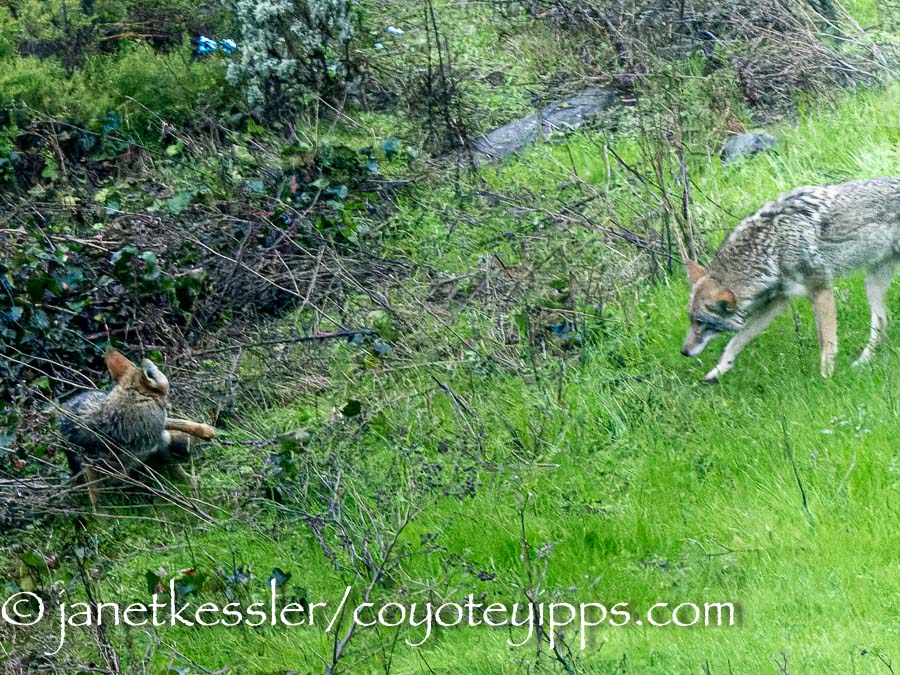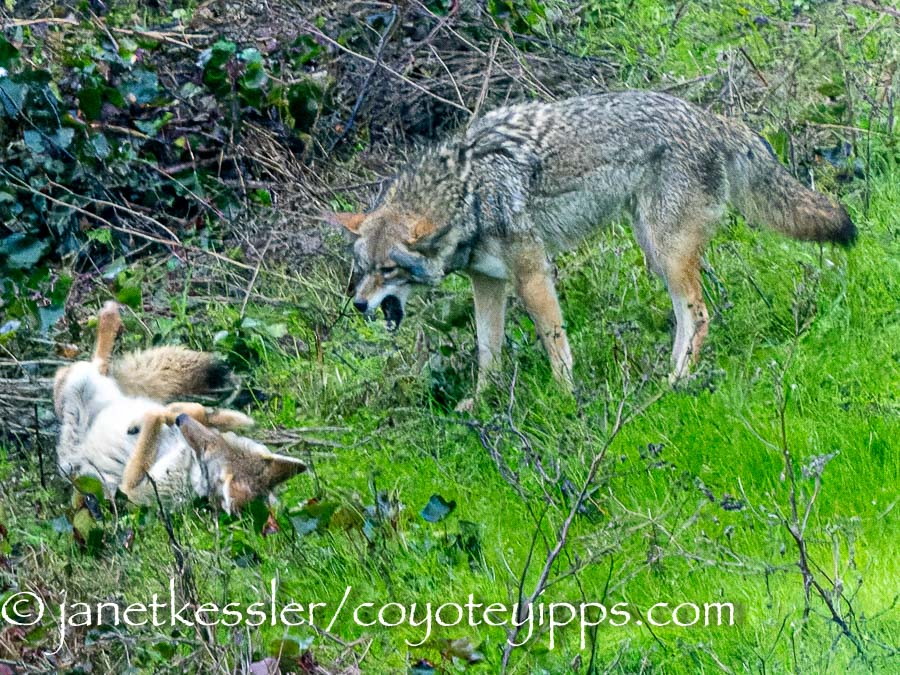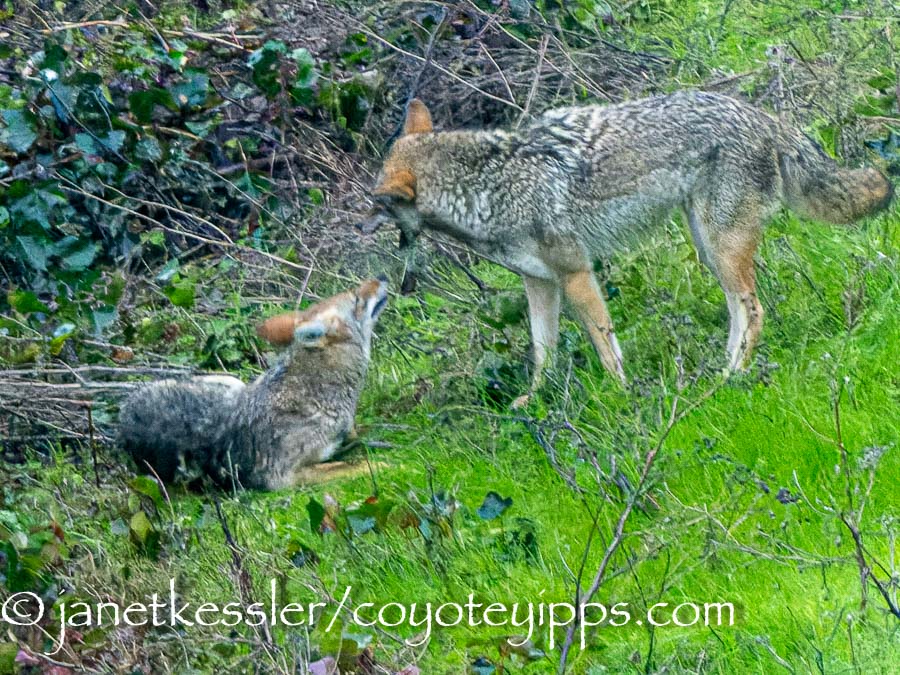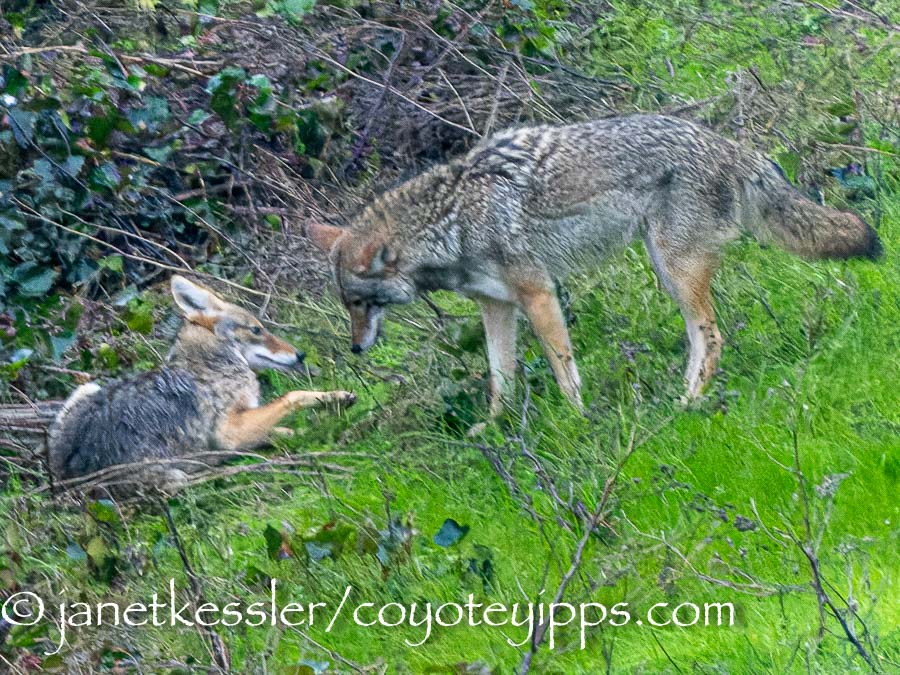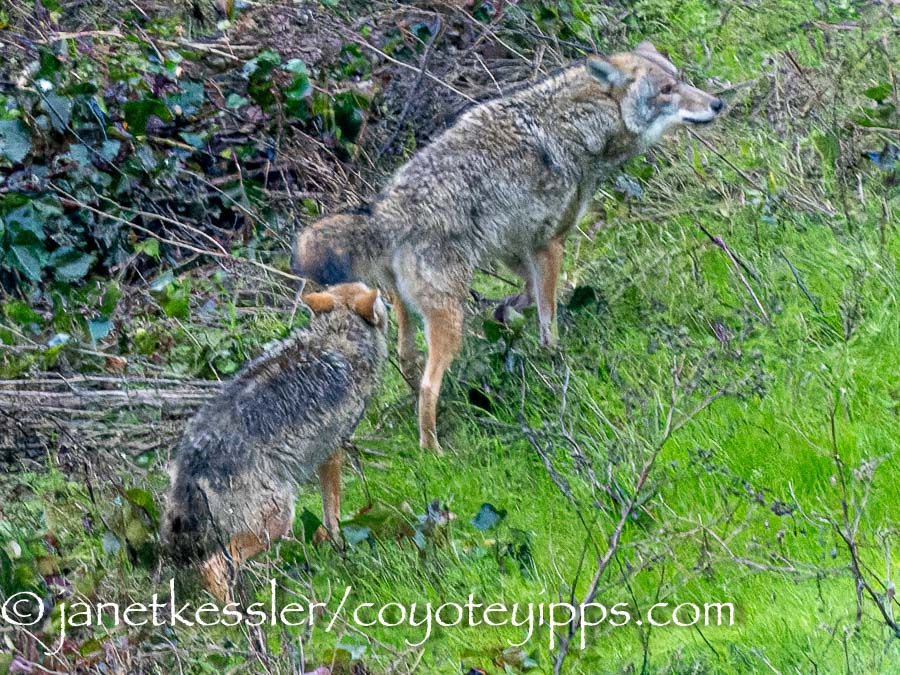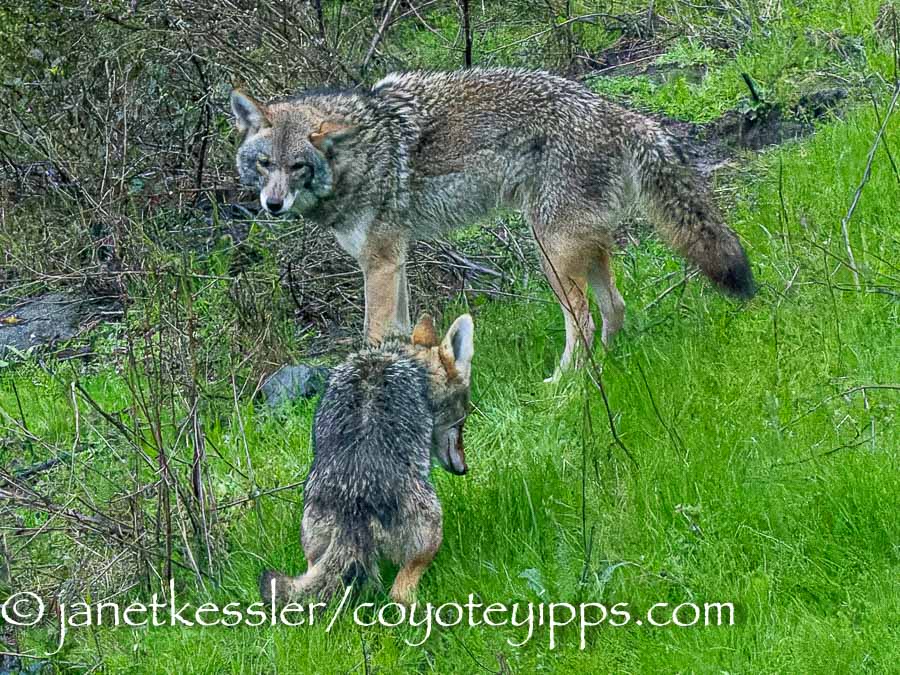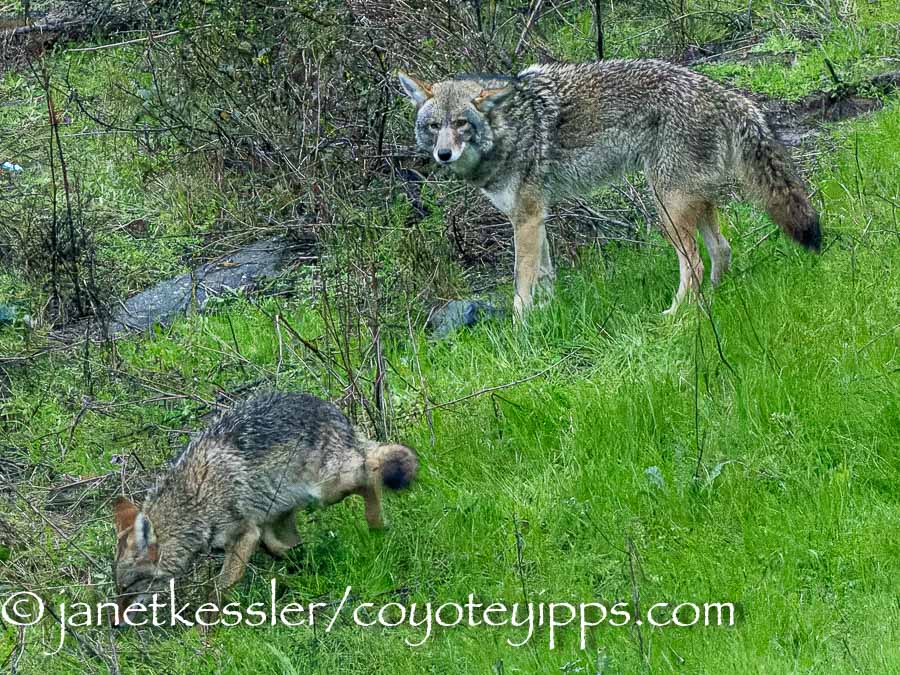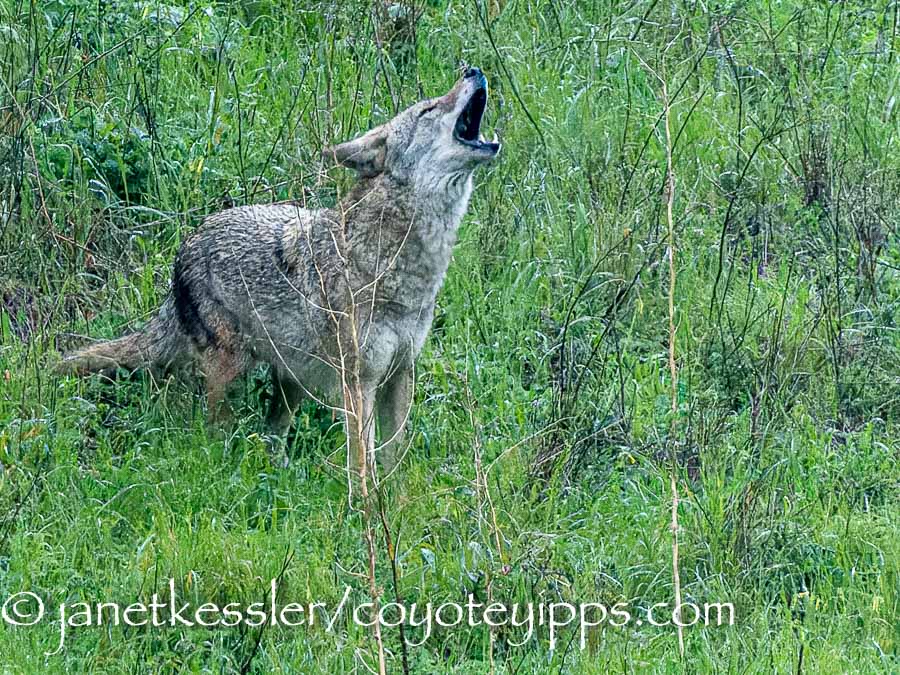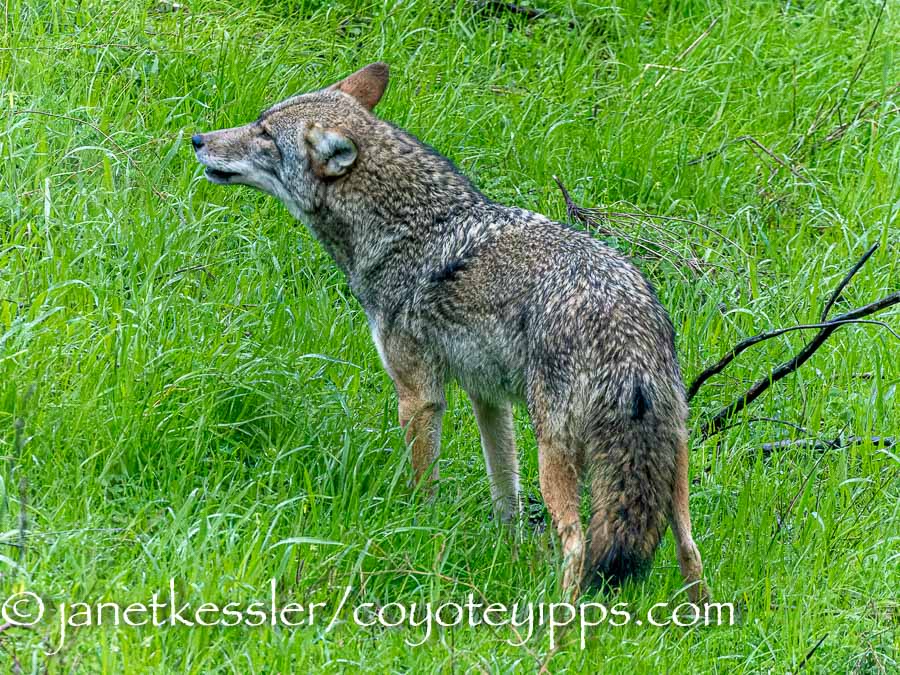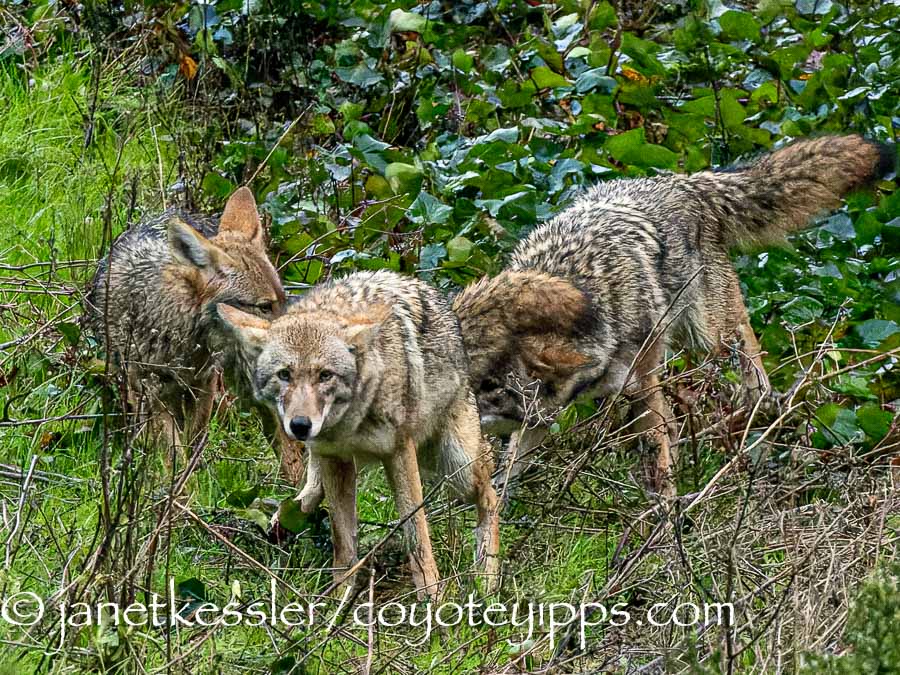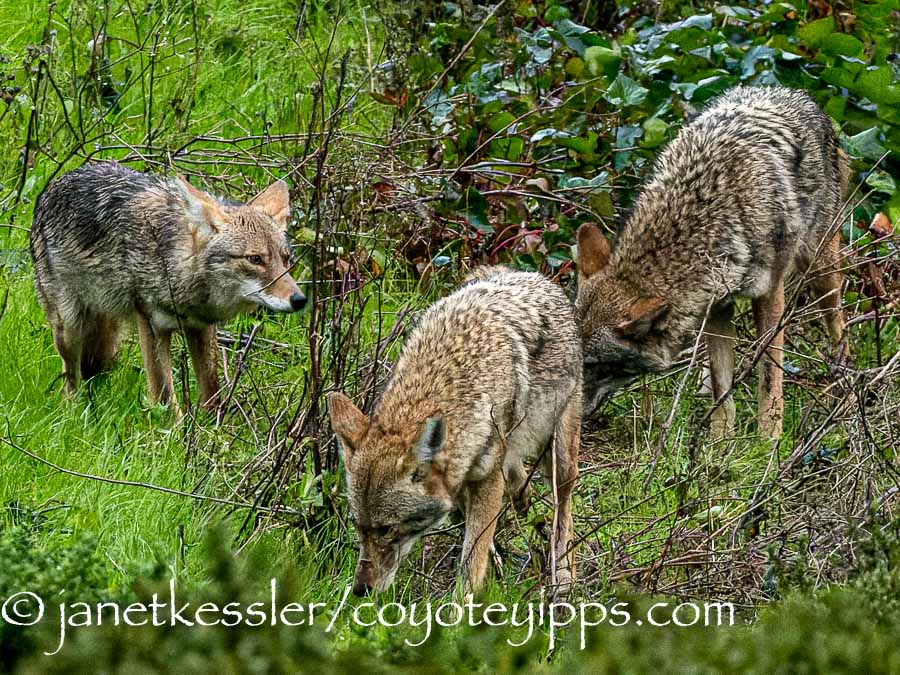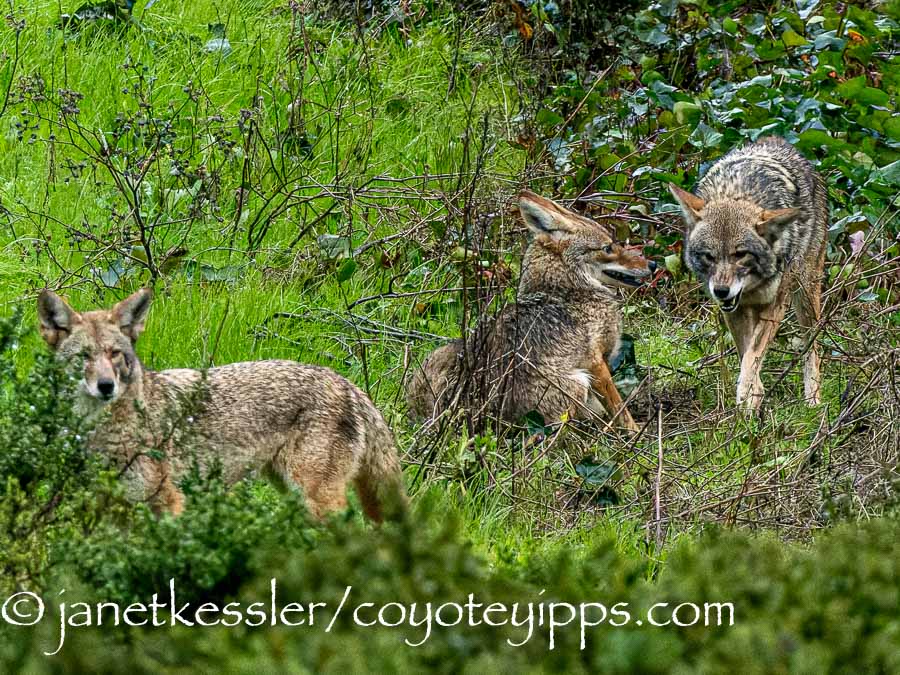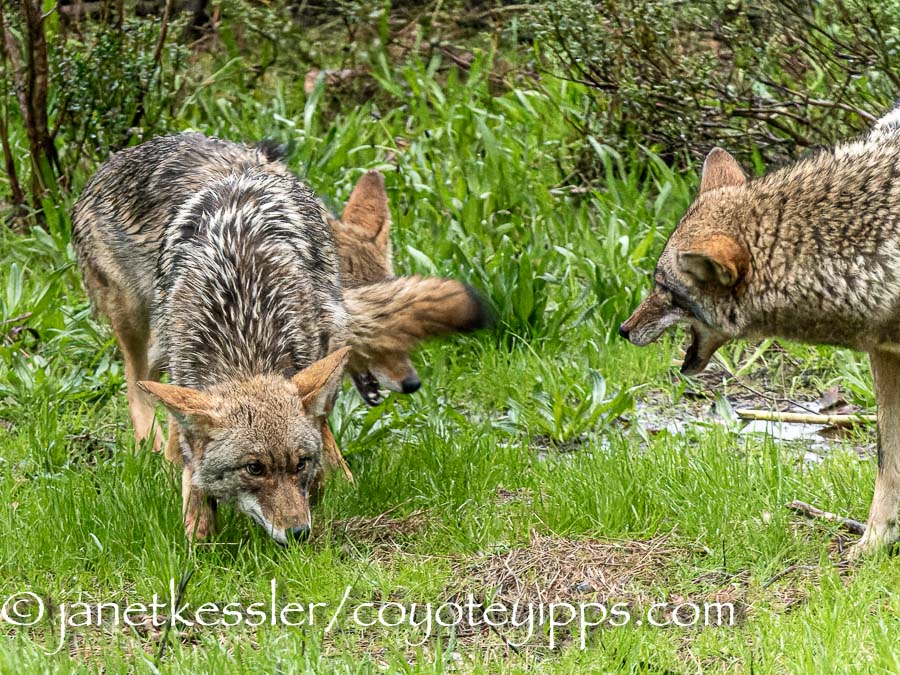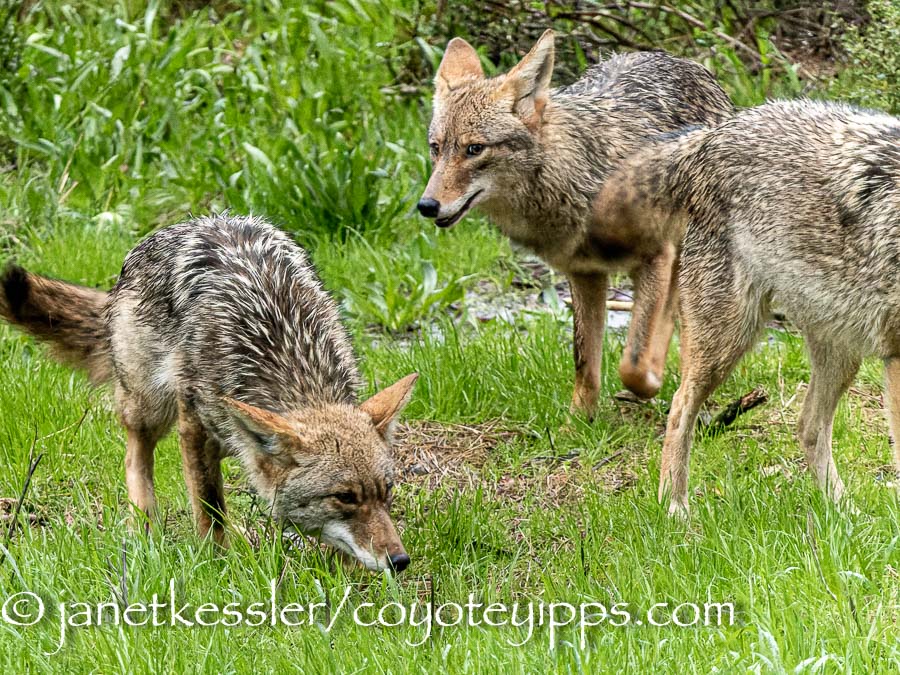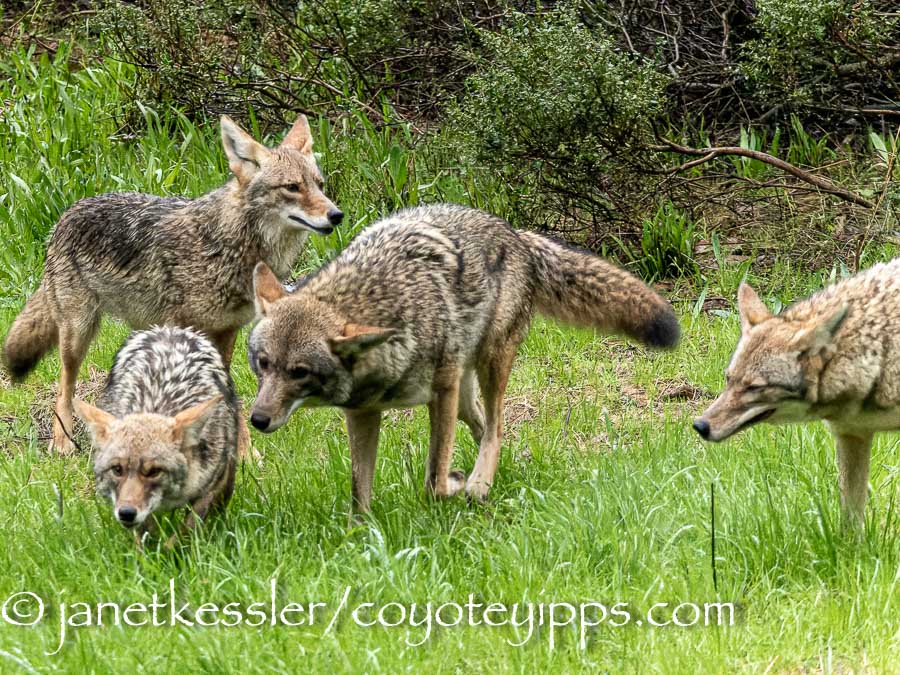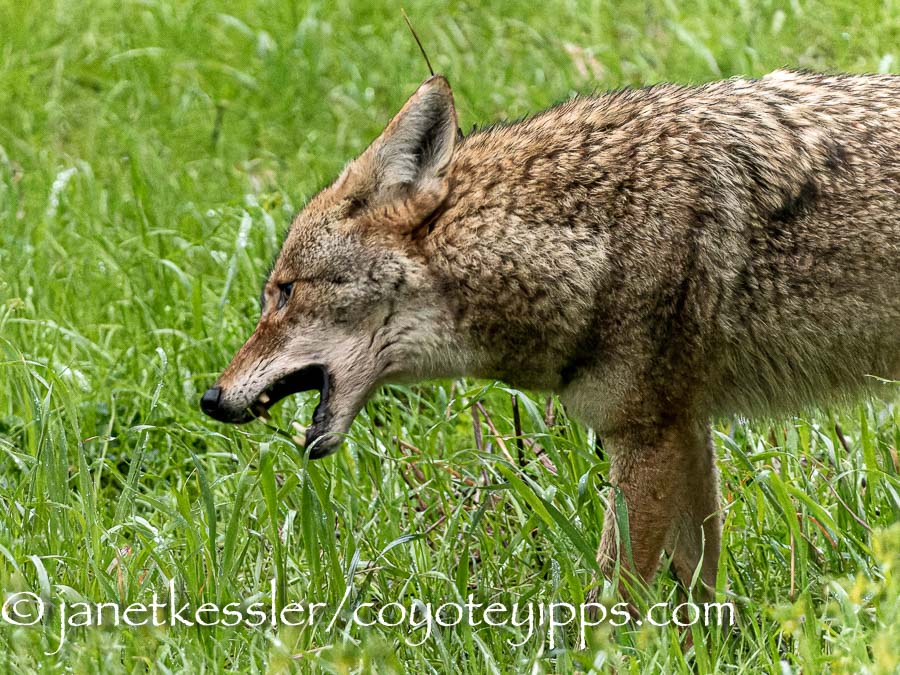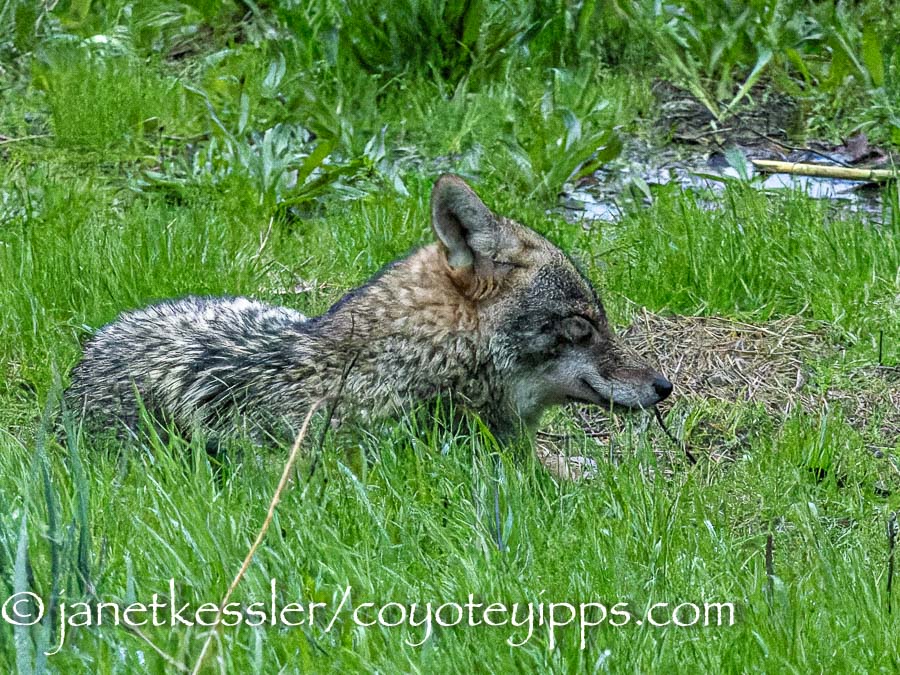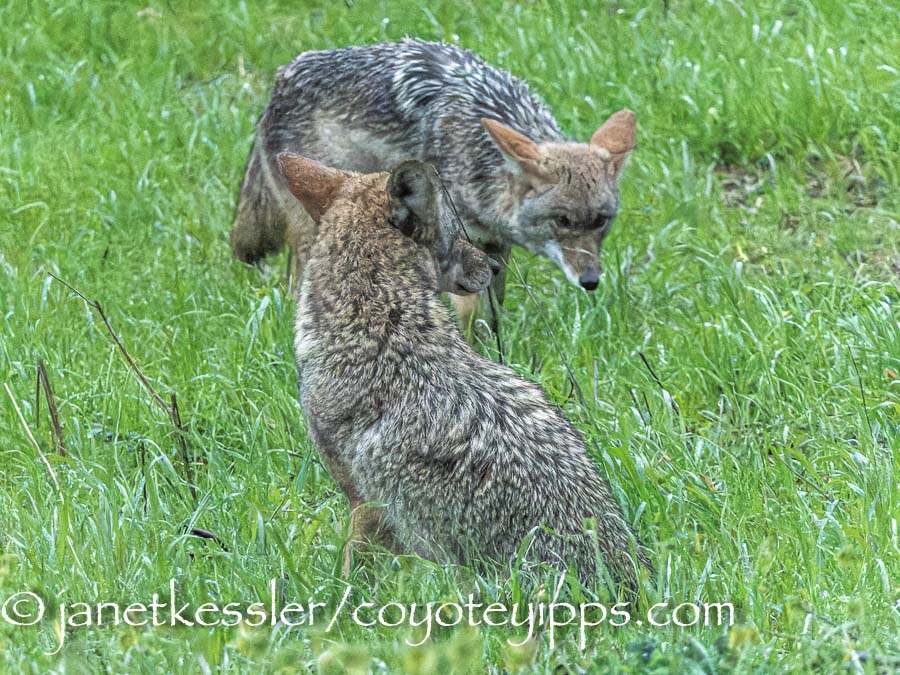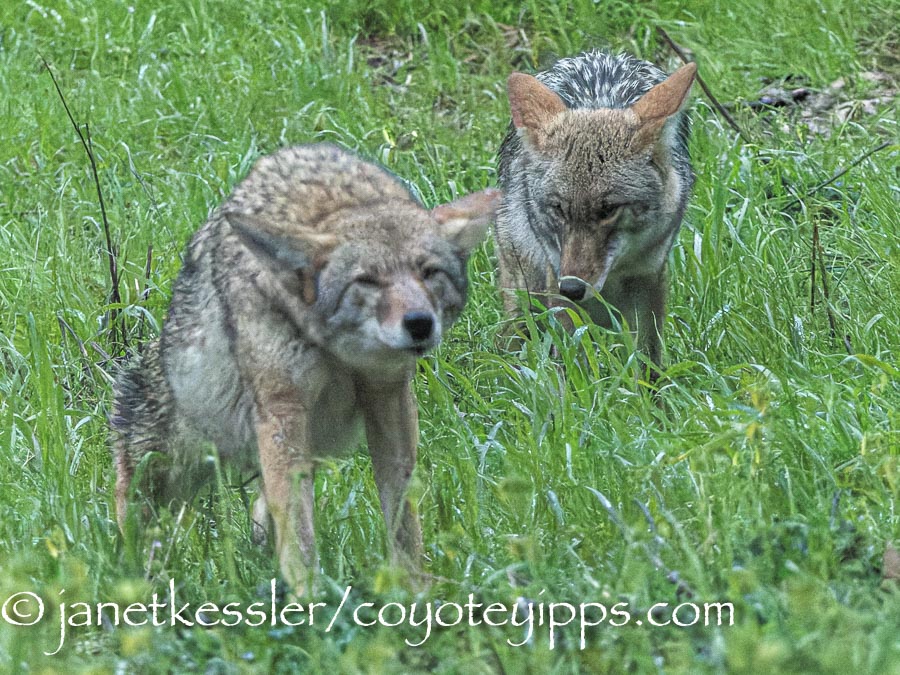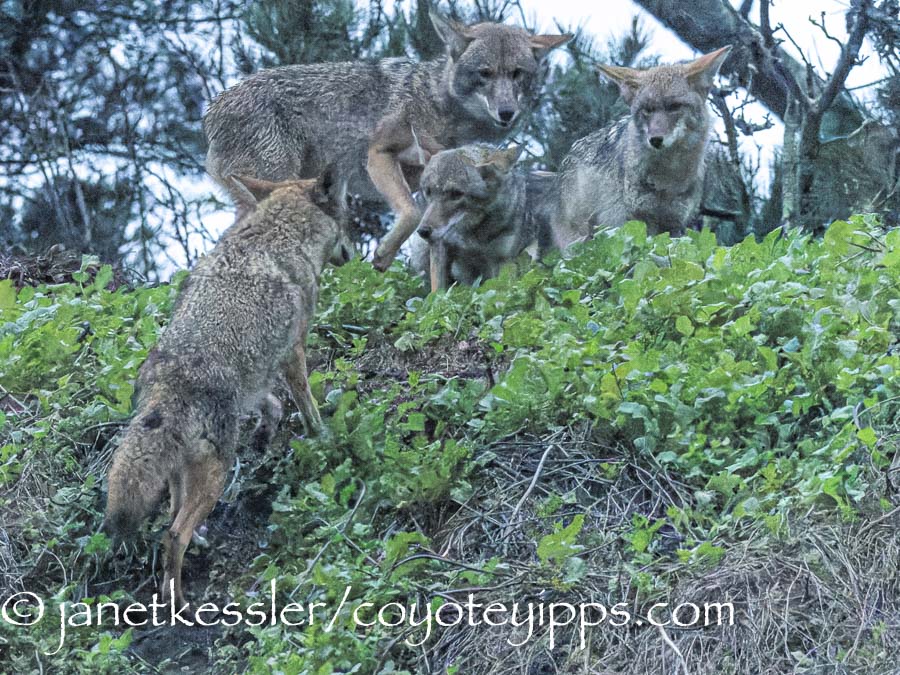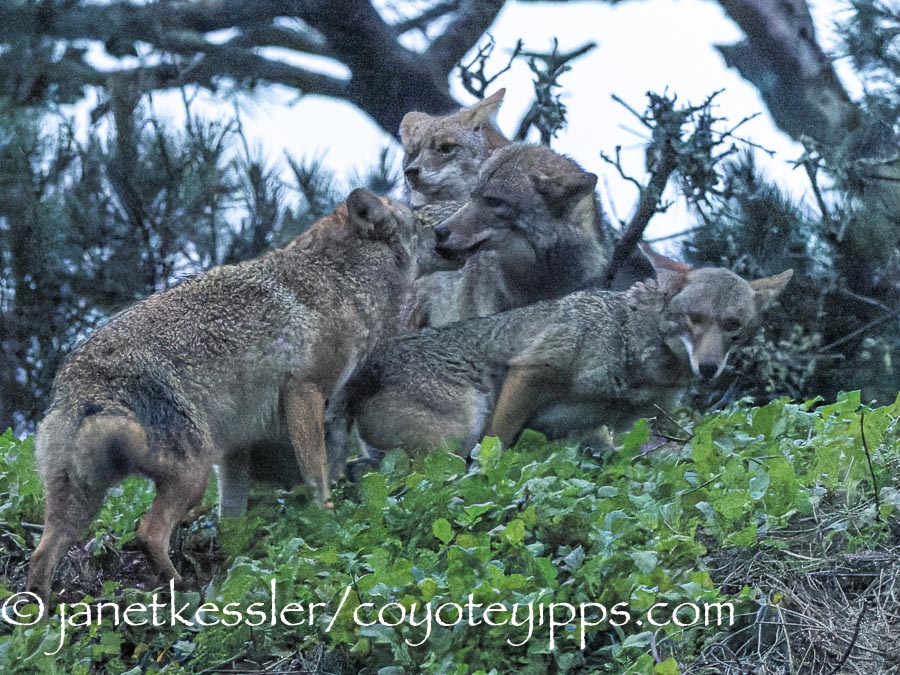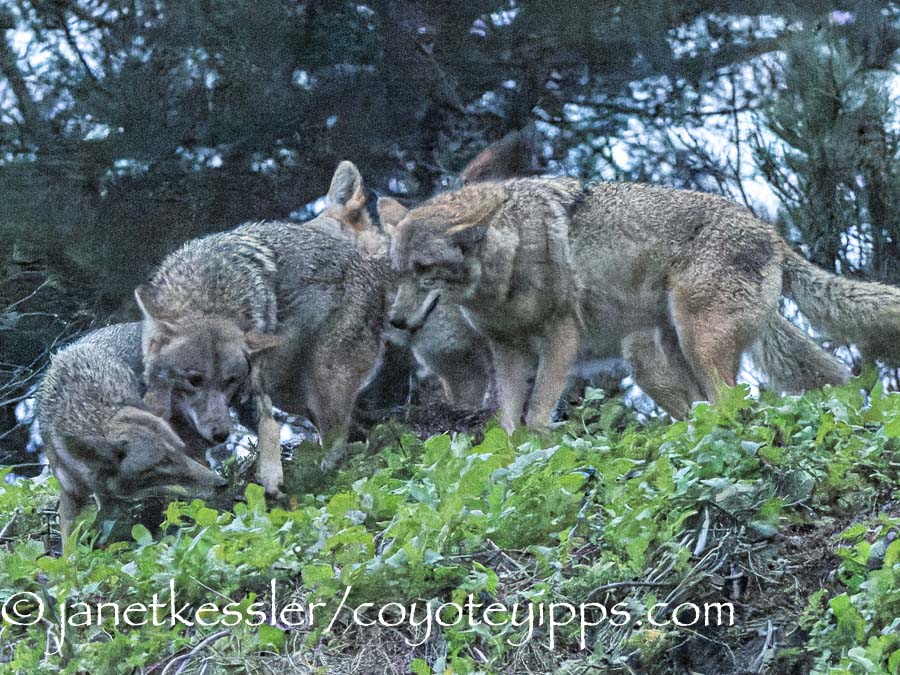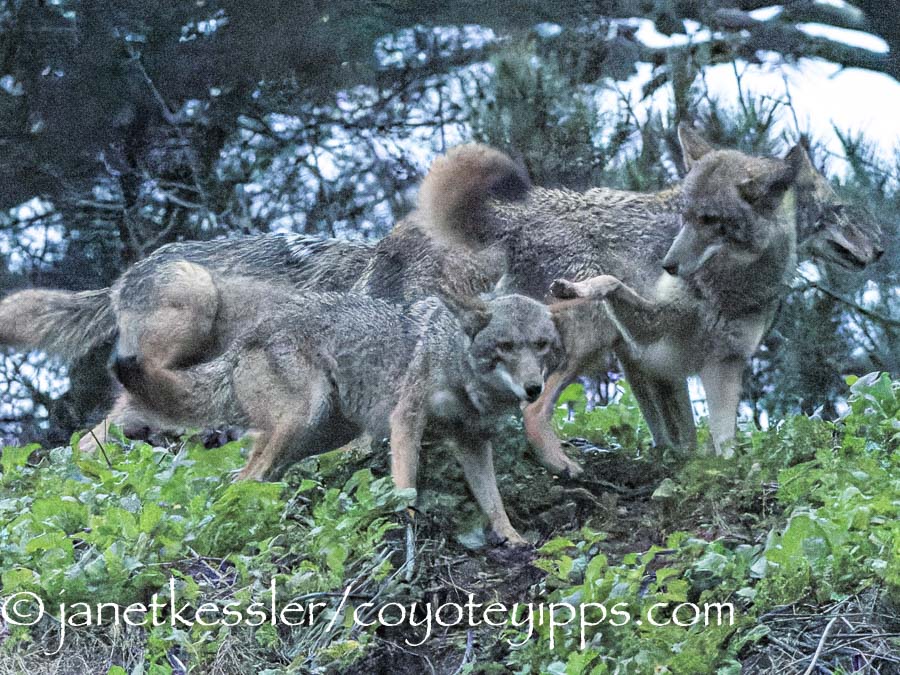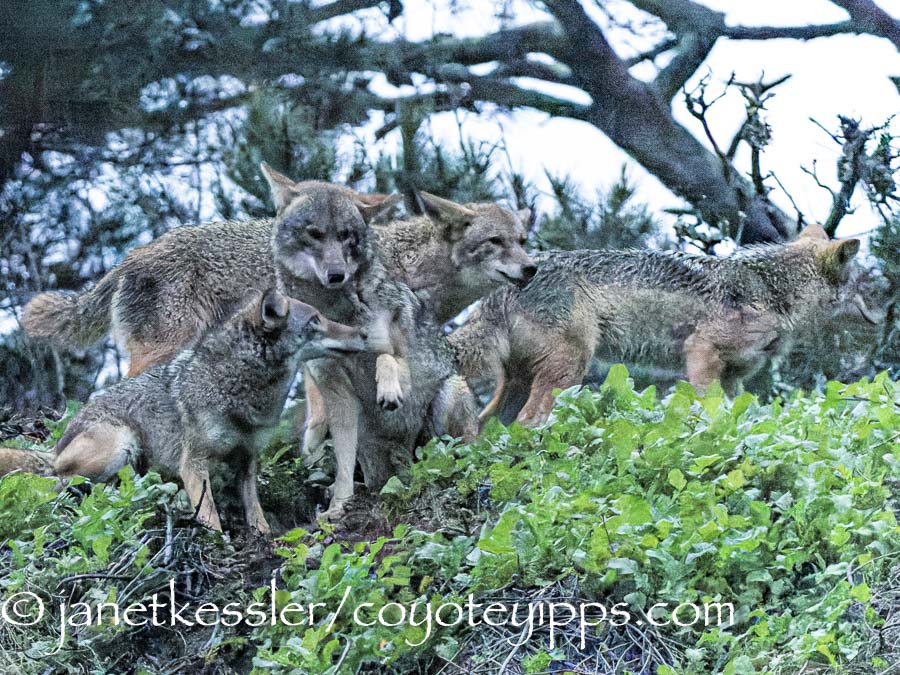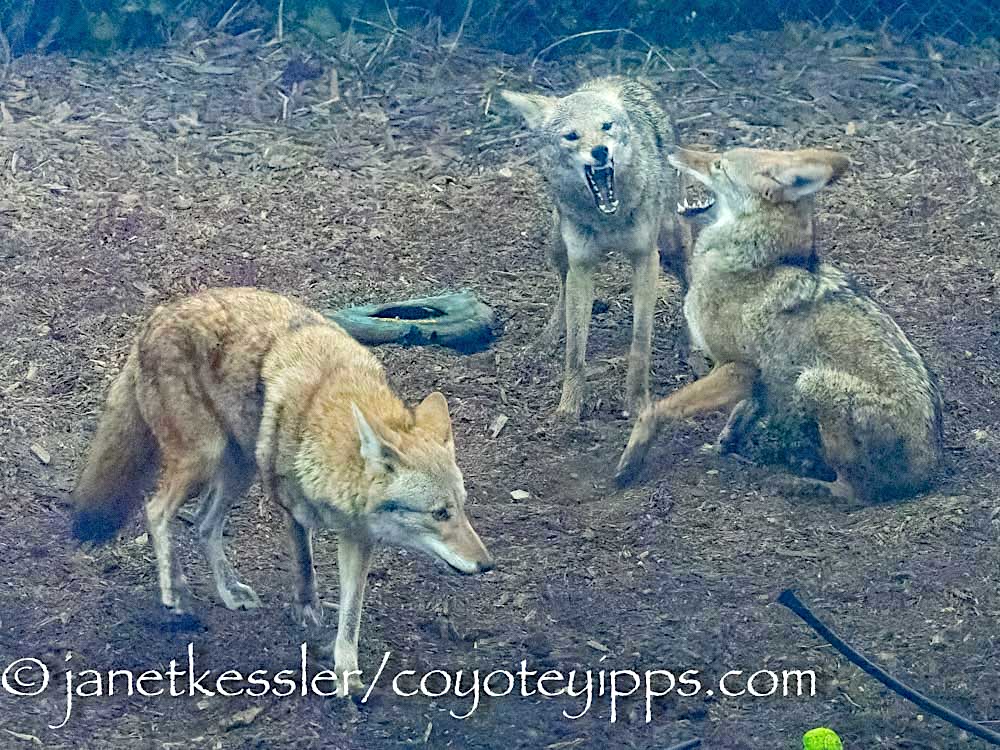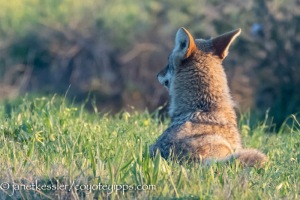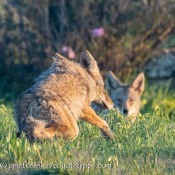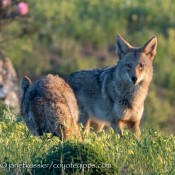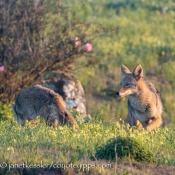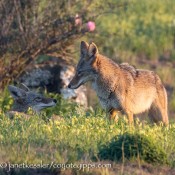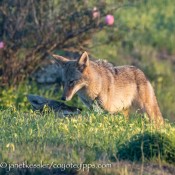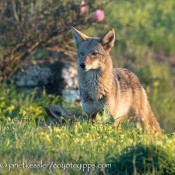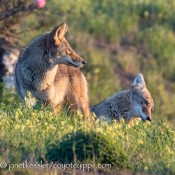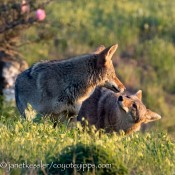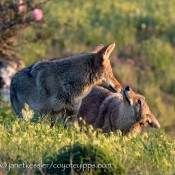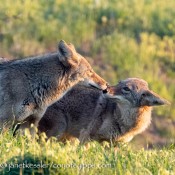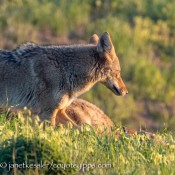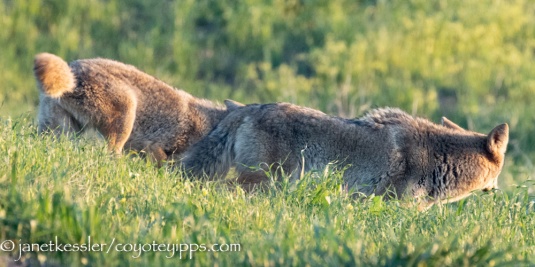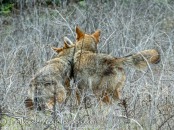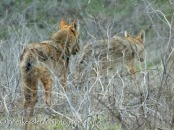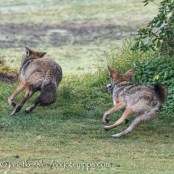Each rendezvous is different in the details, though the purpose remains the same: a family coming together before their family trekking activities at dusk. I’m posting this to show how different these get-togethers can be. My previous rendezvous posting (a different family) included Mom and Dad and two 9 month old pups and two youngsters didn’t show up: from Dad there was discipline, growling, baring of teeth, hierarchy demands. Mom wanted to be left alone. Breeding season being right around the bend probably had something to do with their behavior. That family lingered around for about half an hour before taking off, but not this one.






Mom appeared suddenly and was all business: she was searching for family members.
This one began with Mom suddenly showing up alone in the waning daylight hours. She was edgy and highly alert and purposeful, looking around searchingly for the appearance of other family members, all the while keeping her eyes on the waning activity of people and dogs. At first she walked around a very small area, above, then, below, she stood in one spot where she eventually lay down, turning her head continually from side to side searchingly.






After a few minutes of walking around, she posted herself in one spot and kept looking around, then she stretched, continuing to look around, but now from a laying down position.
After she departed for her another walkaround (below) — waiting and waiting, searching and searching — a yearling abruptly appeared on the hill without me having seen where he came from. Mom immediately returned to where he was and approached him with a quick greeting: nose touches and there was warmth: no snarling at the youngsters as you saw in the previous posting. Then again, this yearling is a full year older than the pups in my last posting.









She got up to search further than what from where she had perched herself, stretching and then returning to her post.
More than any other coyote I’ve ever seen, this alpha mom appears to feel responsible for the safety of all her family members — she exudes this, even years ago, before she had her first family, when she acquired her very first companion after being a loner for four years: Anxious and Concerned for HIS Safety. Maybe all coyotes feel this way, but this coyote puts it on full display.






This time, when she returned to her post, a yearling son was there who she warmly greeted. He must have been one of the individuals she had been looking for and awaiting. Mom is the smaller and wiser coyote on the right.
Mom continued in her anxious state: again she hurried away a few feet, apparently looking for another family member and the yearling followed part way. Suddenly I could see Mom relax — she must of spotted whoever else she had been looking for. I caught only a short focused video (below) (between long stretches when the camera wouldn’t autofocus because of lack of light), of the two of them trotting happily up a hill, wiggling, rubbing against each other and the pup reaching for her and almost embracing her.
The three of them were ready to go, and they headed off together, the same as the other family had. Once out of view, within a few minutes, from behind the bushes, they began a howling session: it was a cacophony of vocalizations which sounded like many more than probably the 5 that were there — it sounded as though the rest of the family, two others: a pup and Dad, had joined them, even though they had never come into view for me. What stood out here was Mom’s anxious awaiting: once the two yearlings appeared in rapid succession, the family was off, joined, it sounded like, by two other family members. I recorded the howling, but the wind absolutely messed it up, so I’m not going to post it.
ASIDE: A happy rendezvous does not necessarily signify that all is running smoothly. Ups and downs come and go. Over the last week or so, a friend reported that there have been intense fighting noises going on at 5 am — repeatedly in this area. What might this mean? It could be two brothers going at it. It could be Dad working to disperse the male yearlings. And then again, it could be a non-family, territorial battle between this family and the coyote family which used to occupy the area but has been moved over: both families hurry through borderline sections of their distinct territories, and they may be establishing more definite boundaries.

